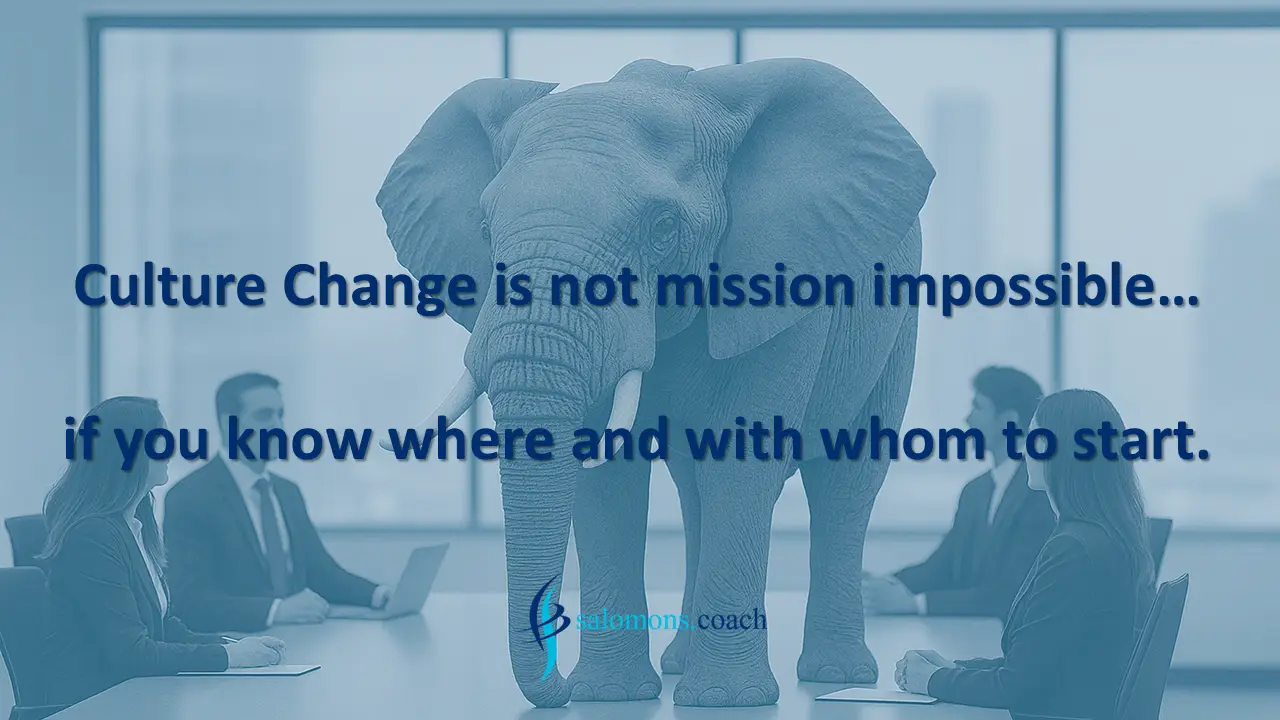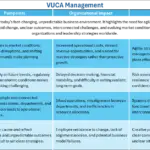Change Culture? This is what leaders do (and not what they say…)!

Culture is often treated like wallpaper — something visible but superficial.
Mission statements, value posters, corporate videos.
And yet, culture isn’t what’s written on the wall.
It’s what recurs — every day, in every meeting, in every decision made (or avoided).
Culture is the sum of behaviors people feel safe to show.
And when behavior shifts, culture follows.
But that shift doesn’t come from slogans. It comes from the structures, systems, and choices that leaders build and model every day.
The Business Case: When Culture Blocked Performance
A European logistics organization — let’s call it TransLog — approached me with a familiar frustration:
“We don’t have a culture problem,” the COO said, “we have a performance problem.”
Their operations were under pressure: delays, silo behavior between planning and execution, and chronic firefighting in daily operations. Customer satisfaction was declining, but every attempt at process improvement failed after a few weeks.
What they didn’t realize yet was this:
Their processes weren’t broken — their behavioral system was.
The Symptoms
- Escalations up the chain for every minor issue.
- Local optimizations overriding collective goals.
- Meetings filled with discussions, but no real decisions.
- Supervisors hesitant to speak up when things went wrong.
- Repeated “quick fixes” without addressing root causes.
Sound familiar?
When we mapped their leadership routines, the underlying pattern was clear.
Their structures were teaching people to behave in exactly this way.
Where Behavior Comes From
Behavior doesn’t arise from values statements — it arises from structures.
At TransLog, several structures unconsciously reinforced the wrong behavior:
- Unclear mandates: Nobody knew who could decide. People escalated to stay safe.
- Individual rewards: Bonuses linked to department KPIs, not team results.
- Structural overload: Daily firefighting left no time for learning.
- Informal status: Those closest to the top influenced decisions most.
- Meetings without outcomes: Rhythm sabotaged accountability.
- Risk aversion: Mistakes led to blame, not learning.
- Misaligned tools: Reporting systems emphasized compliance over collaboration.
Leaders weren’t telling people to act this way — their system was.
That’s why culture change must start with leadership behavior and systemic redesign, not communication campaigns.
How We Worked: From Assignment to On-Demand Support
At Salomons.Coach, every engagement follows a proven seven-phase approach:
1. Assignment — Clarify the “Why”
Every culture journey begins with a conversation — not about culture, but about business outcomes.
TransLog’s board agreed:
- Increase service reliability by 15% within a year.
- Strengthen cross-functional collaboration in the operational chain.
- Reduce leadership churn and burnout.
The CEO framed it well:
“We don’t need more posters. We need leaders who can work across the chain instead of guarding their silos.”
We defined culture as a business enabler, not an HR initiative.
2. Diagnosis — Reveal What Drives Behavior
We used leadership interviews, observation in team meetings, and a network analysis of information flow.
Within three weeks, the picture emerged:
- Decisions were delayed by unclear mandates.
- Supervisors were over-controlled and under-trusted.
- Reward systems unintentionally encouraged “my team first” behavior.
One board member said after the debrief:
“We’ve been managing symptoms for years. This is the first time we see the real mechanisms at play.”
3. Co-Creation — Design the New Behavior System
Culture can’t be imposed. It must be co-created.
We brought 20 leaders from operations, planning, and support together for two intensive design workshops.
We explored twelve cultural “pressure points,” including decision clarity, meeting rhythm, and error learning.
For each, the group defined:
- What behavior they wanted to see
- Which structure reinforced it today
- What needed to change to make the new behavior easy and safe
For example:
| Current pattern | New structure | Intended behavior |
|---|---|---|
| Unstable mandates | Decision matrix & communication loop | Faster, safer decisions |
| Individual rewards | Shared performance metrics | Collaboration over competition |
| Endless meetings | Defined decision agendas | Outcome-oriented rhythm |
By the end, leaders realized: culture design is system design.
4. Delivery — Lead by Doing
We rolled out a 12-week leadership sprint program.
Each week, leaders practiced one structural shift — from redesigning their daily start-up meetings to introducing reflection sessions at the end of each shift.
As one line manager said:
“The moment I stopped giving answers and started asking questions, my team began solving problems I didn’t even know existed.”
Momentum built fast. What started as a “leadership program” became an operational transformation.
5. Evaluation — Connect Insight to Impact
After three months, we conducted a structured evaluation combining operational data and team sentiment.
The results:
- +11% improvement in on-time performance
- +24% increase in cross-team collaboration score
- 100% of leaders reported higher confidence in addressing behavioral issues
The CFO summarized it perfectly:
“We didn’t just change processes — we changed how people think about accountability.”
6. Hypercare — Embed Before We Exit
Change rarely fails because people disagree. It fails because people relapse.
For the next eight weeks, we provided “hypercare” — coaching leaders in real time, joining their leadership meetings, and giving structured feedback on alignment, communication, and role modeling.
This phase turns theory into habit.
We don’t disappear after delivery; we walk alongside until behavior sticks.
7. Handover and On-Demand Support — Make It Theirs
After six months, ownership shifted fully to TransLog’s internal team.
A dedicated “Culture Anchor Group” — five cross-functional leaders — took over monitoring and peer-coaching roles.
We stayed available for on-demand support:
- Quarterly reflection sessions
- Leadership onboarding for new managers
- Refresh modules on behavioral diagnostics
The CEO noted in the final review:
“For the first time, culture feels like part of operations — not a separate HR project. It’s how we lead.”
What Leaders Learned
From this journey emerged several leadership lessons:
- Behavior follows structure. If you want new behavior, redesign the system that shapes it.
- Psychological safety is the soil. Trust allows leaders to challenge each other without losing connection.
- Reflection is a performance tool. Learning moments must be planned, not left to chance.
- Distributed leadership accelerates change. When every level leads, accountability multiplies.
- Culture change is continuous. It doesn’t end with rollout — it evolves with every decision made.
The ROI of Culture Work
Culture change isn’t soft. It’s structural ROI.
At TransLog, measurable outcomes included:
- 12% reduction in process deviations
- Faster decision-making cycle times (–30%)
- Lower turnover among supervisors (–18%)
- Higher employee engagement and customer satisfaction scores
The board viewed it not as a project, but as an operating model evolution.
As one director concluded:
“The real win isn’t the metrics. It’s that our leaders now talk about culture as a business system — not a mood.”
Final Thoughts: From Words to Structures
Culture change fails when it stays in the realm of intention.
It succeeds when leaders translate intention into structures, incentives, and rituals that make the desired behavior easy — and the undesired behavior hard.
Because culture doesn’t live in what we say.
It lives in what we allow.
And what leaders allow — through their choices, clarity, and courage — defines the organization’s future.
✳️ Culture change is not mission impossible.
It’s a leadership choice — made visible every day in meetings, conversations, and decisions.
Jan Salomons
Trainer | Coach | Leadership & Culture | Performance & Change | Operations Excellence
Interested in open conversation about leadership & culture change in your organization? let’s have a short meeting to see if my approach fits, no charges. Session Scheduler – salomons.coach




